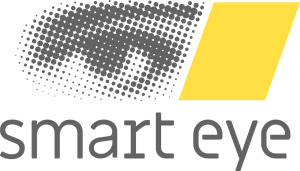Smart Eye, the global leader in Human Insight AI, technology that understands, supports and predicts human behavior in complex environments, and neuroscience research product and service provider Psychology Software Tools, announced a new solution that delivers direct communication between their systems in real time with millisecond-accurate markers.
Psychology Software Tools’ E-Prime is a user-friendly stimulus presentation software that helps its customers increase their productivity, effectiveness, and confidence in addressing the challenges they face in human behavioral research, assessment, and education. E-Prime integrates behavioral experiments with eye tracking, EEG, fMRI, and physiological tools.
Knowing where and when a participant looks can be important for psychology research data analysis. For example, experiments including eye tracking provide confirmation of participants’ attention to information being presented. Through this partnership, the behavioral data collected from Psychology Software Tools’ E-Prime software is combined with the eye gaze data of the non-invasive Smart Eye Aurora eye tracker. The Chronos hardware device, also provided by Psychology Software Tools, embeds digital markers in the eye gaze coordinates data stream, giving the researcher timestamps for analyzing the participant’s reaction time to on-screen stimuli (e.g., text or images). The Chronos setup provides additional opportunities for researchers to collect responses, record vocalizations, play audio, and integrate other devices – all with millisecond accuracy.
This collaboration combines 35 years of Psychology Software Tools researcher software experience with Smart Eye’s 20+ years eye tracking technology expertise, and builds on a recent product release of Smart Eye, including the Aurora 250 and expansion box. Aurora 250 is an exciting enhancement to the Aurora product line, including an increased frame rate, which allows research groups to study eye movements in more depth, and more accurately detect the start and end point of fixations and saccades. The expansion box capability also allows researchers to accurately synchronize the eye tracking data from the Aurora with other sensors such as EEG. Timing accuracy is essential in the field of research, as the technology must keep up with the quick brain processes of participants that are reacting to stimuli.
Anthony Zuccolotto, President & CEO at Psychology Software Tools commented, “We are excited to continue our partnership with Smart Eye with a renewed focus on integrating E-Prime 3.0 with the 250 Hz Aurora eye tracker. Over the past 12 years of our partnership, the Smart Eye team has proven their commitment to serve the research market with ongoing investment and development of new solutions. Smart Eye has responded to the needs of the field by updating their non-invasive Aurora eye tracker to reach faster speeds, resulting in higher precision data that is required by advanced experiment designs. We strive to continue providing integrations with the tools that our customers need to expand their research using E-Prime and succeed in their endeavors.”
Solmaz Shahmehr, Vice President & Head of Research Instruments at Smart Eye commented, “We are very excited to not only continue our longstanding collaboration with Psychology Software Tools, but to further develop solutions that address the needs of researchers as they navigate the challenging work of understanding the human mind. Together, we aligned on what this research community was asking for to deliver a faster and more accurate technical solution that furthers their insights that drive human behavior. This resonates with Smart Eye’s core mission to bridge the gap between human and machine, and today marks an important step on the way to achieving our goal.”
Psychology Software Tools will have a demo of this solution at the Cognitive Neuroscience Society Conference coming up on April 23, 2022. If you are interested in seeing a demo at the show, please contact Psychology Software Tools, Inc. to schedule some time, or contact Smart Eye to learn more.
About Psychology Software Tools, Inc.
Psychology Software Tools, Inc. was founded in 1987 with the goal to provide products and services to customers which increase their productivity, effectiveness, and confidence in addressing the challenges they face in human behavioral research, assessment, and education. Psychology Software Tools, Inc. developed the E-Prime, a user-friendly stimulus presentation software, to realize this goal. E-Prime integrates behavioral experiments with eye tracking, EEG, fMRI, and physiological tools. Among many applications, Psychology Software Tools, Inc.’s Chronos device serves as the delivery system for millisecond-accurate markers to external devices, including Smart Eye Aurora. For more information visit www.pstnet.com.
About Smart Eye
Smart Eye is the global leader in Human Insight AI, technology that understands, supports and predicts human behavior in complex environments. Bridging the gap between humans and machines for a safe and sustainable future. Smart Eye was founded in 1999, is publicly traded and headquartered in Sweden with offices in the US, UK, Germany, Denmark, Egypt, Japan, Singapore and China. Through our Research Instruments, Smart Eye offers the world’s most advanced eye tracking systems for analyzing human behavior. Offering unparalleled performance in complex environments, our carefully crafted instruments enable unparalleled insights into human behavior and human-machine interaction in automotive, aviation, assistive technology, media & marketing, behavioral science and many more fields. Today, our technology is used by NASA, Airbus, Boeing, Toyota, Daimler, Audi, GM, Harvard University and hundreds of research organizations and universities around the world. For more information visit www.smarteye.ai.
___




